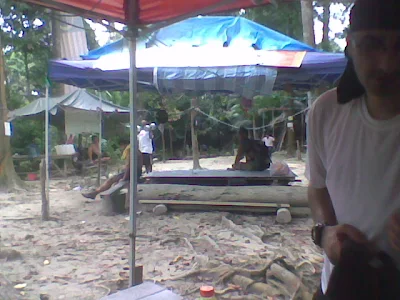Pussycat Dolls (PCD) once sang... "When I grow up, I wanna be famous, I wanna be a star, I wanna be in movies! When I grow up, I wanna see the world, drive nice cars, I wanna have groupies!"
At least his dream materialized two over scores years later! |
Martin Luther King Jr. had a dream that one day over the rose hills of Georgia, sons of former slaves and former slave owners will be able to sit together in the table of Brotherhood and that his four children would not be judged by the colour of their skin but by the content of their character!
Dream merchants like Walt Disney gave people a form of escapism through his Mickey Mouse, Goofy and Donald Duck characters. Soichiro Honda managed to pull his war torn bankrupt and defeated nation to be at par with its victors till of recent. From a humble bicycle repair shop, his company is now venturing into artificial intelligence and robotics!
I too had a dream... which remains a dream.
Dream merchants like Walt Disney gave people a form of escapism through his Mickey Mouse, Goofy and Donald Duck characters. Soichiro Honda managed to pull his war torn bankrupt and defeated nation to be at par with its victors till of recent. From a humble bicycle repair shop, his company is now venturing into artificial intelligence and robotics!
I too had a dream... which remains a dream.
Growing up in the post May 13 era, what was fed on the mass media to us was pure propaganda and we were all made to accept it as the gospel truth. We were made to understand that everything was hunky dory and the Government was serious in their zest to eradicate poverty and foster muhibbah (interracial understanding) via their 5 year plans, paving the way to make this country a developed nation by 2020. Soaked in that kind of hope day in and day out, I actually envisaged Malaysia to be clean, mild weathered, modern, its courteous mild mannered smiling educated citizens in impeccable designer clothes talking to each other without malice and suspicion, with skyscrapers, shiny expensive vehicles streaming the seamless highway to everywhere. Then the bubble burst and there was a reality thud on my head!
Poverty eradicated? I think it is far from it. Over the years, a new set of obnoxiously nouveau rich have emerged. They have no qualms about throwing their orange peels out of their chauffeur driven imported cars. The poor rich are still aplenty in the form of some who were displaced off their homes in the name of development. There are also many illegal immigrants who either ran away from their legal employers to become illegals or came via trawler boats under cover of darkness of the night to occupy strips of land (settlements) in the edge of city where even police fear to enter. Thanks to the lax or non-existent enforcements, these settlements prosper. They may appear poor but they have loads of cash stashed away to be sent home. Just wait for a mishap to happen, either in the form of disease outbreak (the children do not complete the mandatory vaccinations) or violence to happen before heads will roll. But, will they?
Malaysians, generally have improved by giant strides from an economic stance but there will always be a small recalcitrant group who would forever indulge in self pity and escapism. There are still people wondering around town with no identification papers. And they say, "We are Malaysians, yeah, just that my Malay is not so good. Isn't Mahathir the Prime Minister?" And I say, "Sure and I am Rajnikanth!"
Communication between Malaysians is still an issue as it was in the newly independent Malaya. Young adults, in spite of completing Malaysian education system still need interpreters when dealing with civil servants just like their grandparents 50 years previously.
Skyscrapers we have but its maintenance leaves much to be desired. We employ security guards who are too old, too sick, too incompetent to hold any other job or foreigners.
Wearing short pants, singlet and Japanese slippers could get you anywhere in the 60s and 70s. Fashion sense has not changed much since. Throngs of visitors to malls, clinics, offices are still dressed like this; just that the fashion police would say it is cool, trendy and metro-sexual. Anyway, their idols on Hollywood and Californians also dress like that and we are both in hot climates! Well, the 'holier-than-thou' Government offices have strict guidelines on dressing at their premises. They have set their air-conditioners way down low to be dressed down.
People are still suspicious of each other. In those days, it was whether you were a communist; now it is general stereotyping and that the other is going to cheat them blind. It is compounded by many Nigerian 'students' promising to convert white paper to green back (USD)! Just see how many Malaysians drug mule girls are counting bars caged in foreign gaols from Japan to Peru. Why is the word 'students' is in inverted commas? That is because these so called students do not act like students. They wear branded clothes smelling of expensive perfumes splashed all over the body liberally, sporting buff muscular physique, forever with female company and drinking alcoholic beverage like a fish drinking water. They pay their bills from a stash of RM50 bills. These 'scholarly students' do not speak very good English for a start. Can you imagine students of English courses describing their predicament as, "My stomach is paining me, Doctor!"? And what is this with their frequent treatments for sexually related ailments? Have you the local girls going hand and glove with them?
I better stop before this becomes a nightmare....








